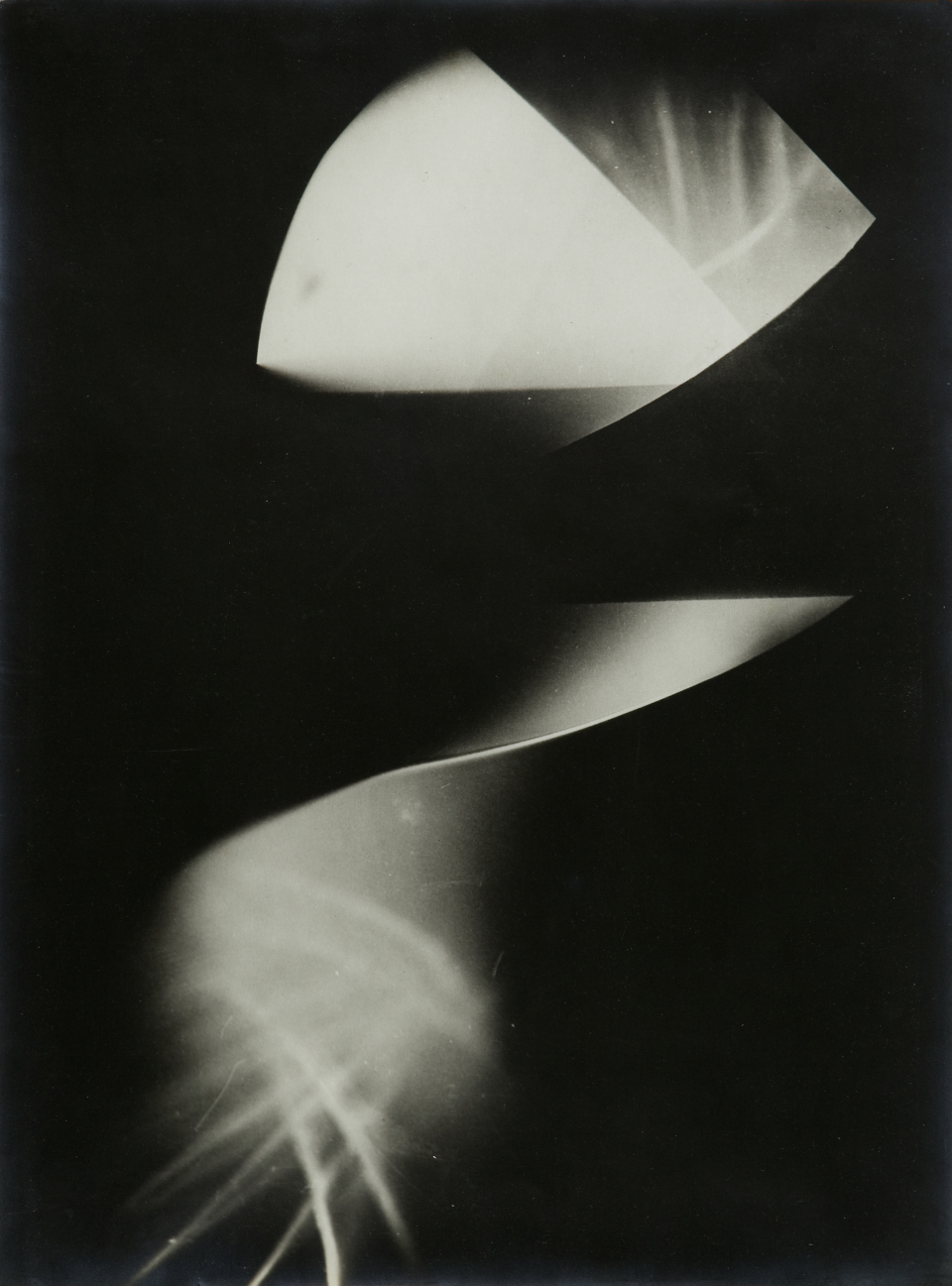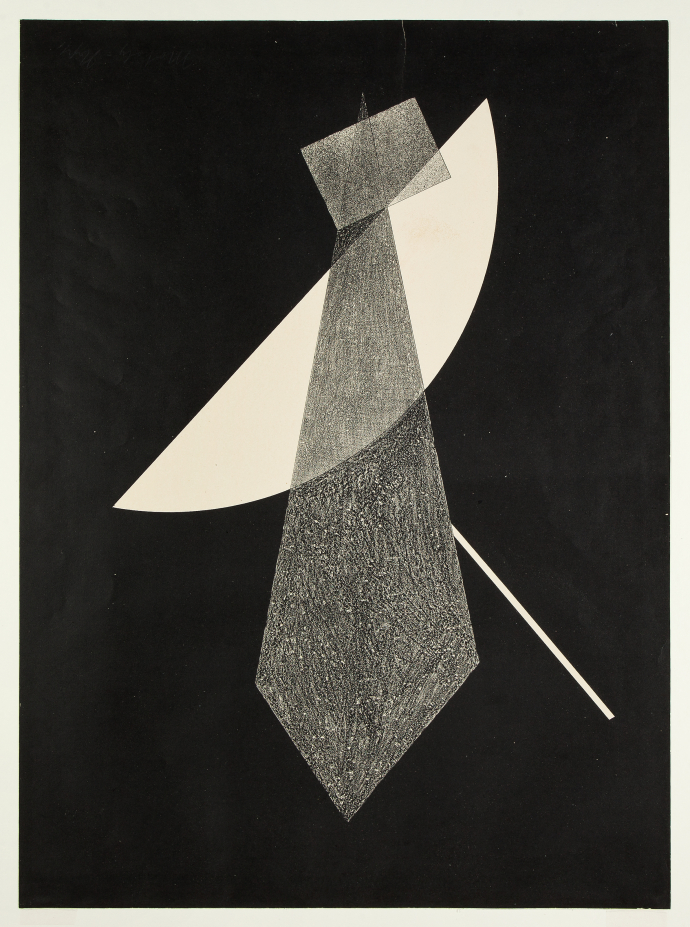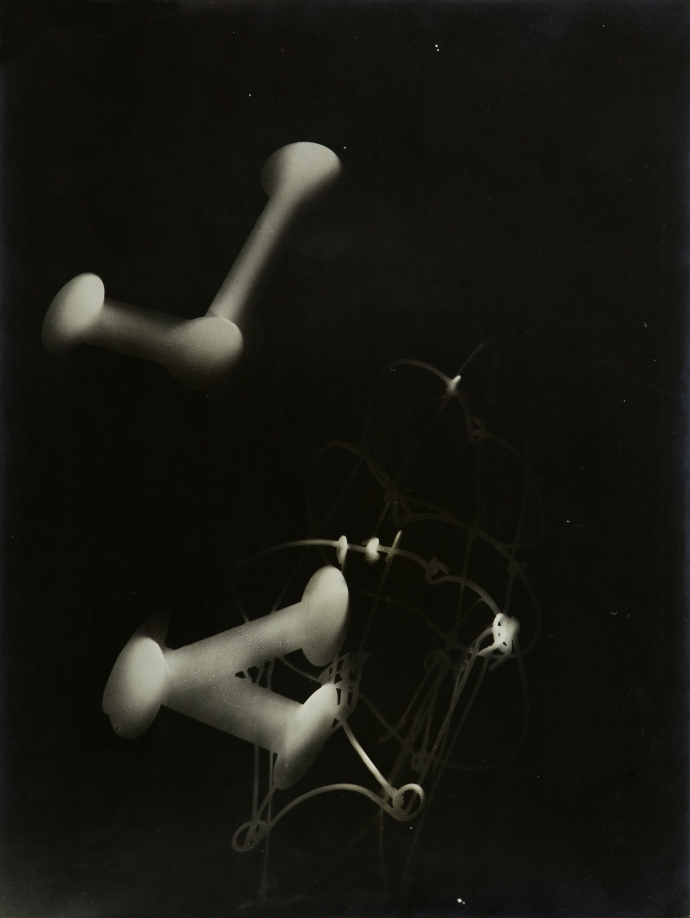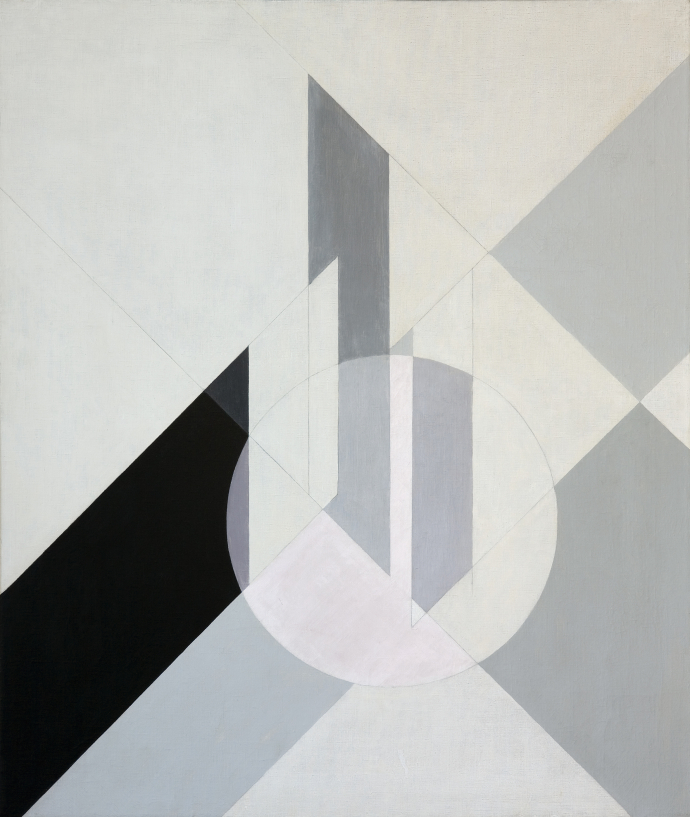nicht ausgestellt
Intro
»Untitled« is one of a series of works which Hungarian-born László Moholy-Nagy termed “photograms.” In 1922 the Bauhaus teacher began experimenting with objects which he placed on photographic paper, exposing them to generate an abstract play of forms. Using this method, Moholy-Nagy created a form of light art, without the aid of a camera, but he was not the only one pursuing such experiments. At around the same time, the German painter Christian Schad (1894–1982) and the French Surrealist Man Ray (1890–1976) were also producing similar light pictures, which they called “Schadographs” or “Rayograms.”
Moholy-Nagy made an intensive exploration of this imaging technique throughout his life, always giving priority to the light design itself. The exposed materials—paper and cardboard, strips of cloth, film reels, or glasses—were rarely recognizable, with abstract forms dominating. Through their concentration on flowing shades and fine gray scales, his photograms generate a bodiless light space. For Moholy-Nagy, this space was devoid of associations. Instead, the manipulation of light as a “material” was paramount, a preoccupation which also finds expression in his paintings, films, and stage works.
Kunsthalle Mannheim
Transkription
One image appears like the movement of a fan drawn through the air, the other seems to show spotlights and a puppet’s strings. What do you see in these works of art?
Using abstract shapes, flowing tints and subtle shades of grey, the „Photograms“ by László Moholy-Nagy create a disembodied light space leaving ample room for interpretation. Beginning in 1922, this Hungarian artist and Bauhaus teacher used objects arranged on sensitive photographic paper which he then exposed to light – without using a camera. In these experimental works he used materials such as paper, cardboard, strips of cloth, even film reels, which are hardly recognizable in the final product.
Quite deliberately, the artist makes the original materials disappear. Moholy-Nagy did not want to trigger any specific associations. Rather, he intended to have the viewer focus on the light structure itself. Consequently, his compositions fascinate the onlooker by their distance from any tangible, familiar shape. And this is achieved in a medium like photography where recognizability is the key element.
This revolutionary technique of so-called »Photograms« also became part of the works of other artists. Almost simultaneously with Moholy-Nagy, German painter Christian Schad and French surrealist Man Ray use a similar technique to create light art without the use of a camera which, based on their own names, they call »Schadographs« and »Rayograms«, respectively.



